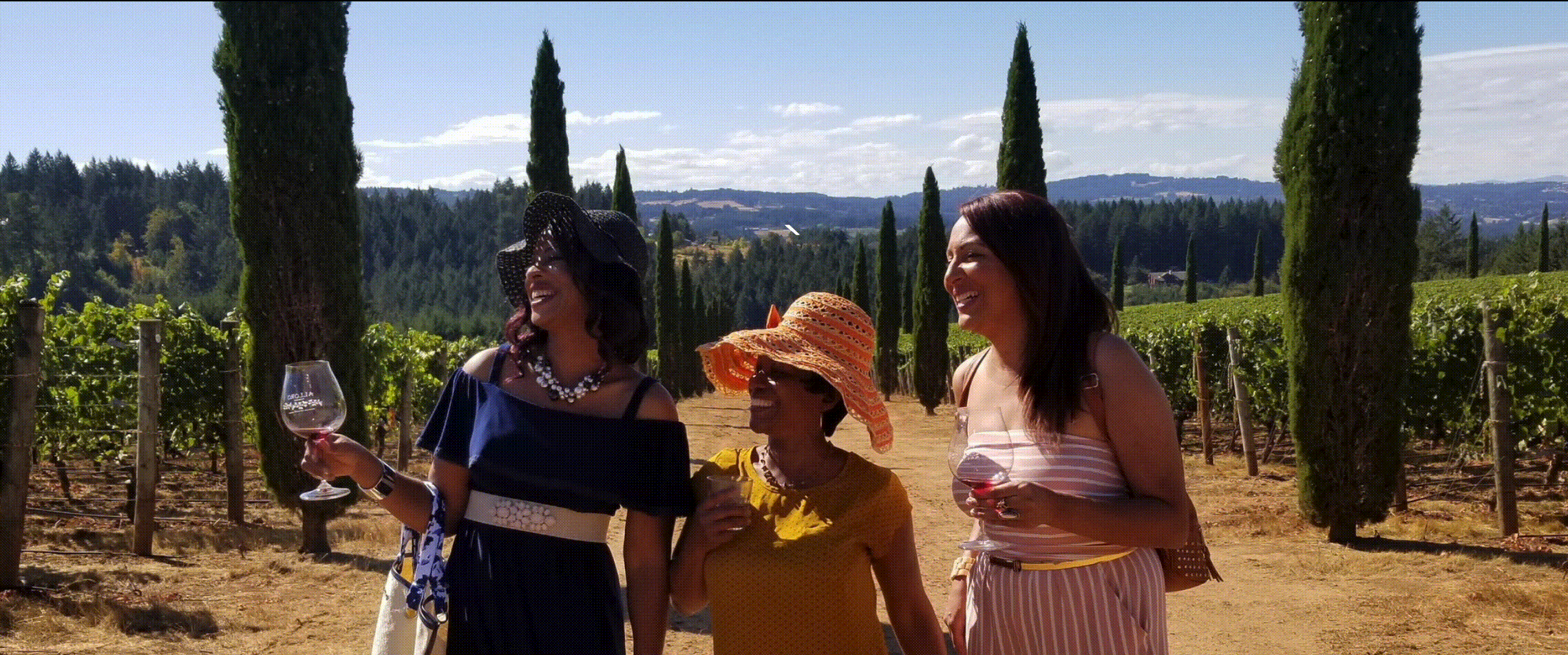UX Research & Design Strategy for my Inclusive Travel Business
Role: Founder, Designer, Researcher
Launched January 2019

Business Inspiration & Goals
The Inspiration
In 2018, I sent my mom on vacation. Tired of seeing her live vicariously through my travels, I told her to grab a friend and clear her schedule - I was sending her to Thailand. I handled all travel arrangements, designing a custom itinerary based on the likes, needs, and budget of my mother and her friend. By day two of the trip, I had received photos of my mother laughing harder and smiling brighter than ever before. Two things became immediately clear:
1. I was a great vacation planner
2. Women like my mother needed my help
I soon created Her Holiday, a custom vacation planning service for women of color. My new business needed a website for potential clients to learn about my services and contact me for a consultation. Here’s how I built that site.
The Problem
Potential clients had no way to learn about my service or contact me.
The Goal
Design a website that a) explains my service, b) shows example trips, and c) directs visitors to contact me.
Research
Objective
Learn about client relationships to vacations and obstacles to travel
Research Methods
Interviews • Surveys • Competitive Analysis • Contextual Inquiry
Research Insights & Recommendations
Adapting Research Methods to the User
Adapting to User Needs
To learn about my clients’ needs and interests, I’d first tried interviews. Open-ended questions weren’t working, as clients had trouble articulating their desires. Surveys consisting of yes/no questions and interest rankings yielded slightly clearer answers, but the best information came from my third approach: photo-centric surveys. When shown images of activities, previously reserved clients responded enthusiastically and definitively - “Ooh, I want to do that!” or, “No way”.
The Constraints
With no teammates or engineers, I would use a basic website builder.
Applying Insights to Design
Goal Achieved?
Yes! After launching my website, Her Holiday started receiving twice as many business inquiries, connecting me with clients I would not have reached before.
Potential clients asked about destinations both featured and not featured on the website, with customization requests. This meant that users understood the customized approach.
Approaches
1. Interviews - didn’t work 2. Traditional Surveys - didn’t work. 3. Photo Surveys - Winner!
Insight: Users had strong emotional reactions to Photos
These strong emotional reactions to photos inspired my Visual Itineraries: photo-centric itinerary proposals consisting of vibrant images and minimal text. I used them in trip consultations, and clients loved them! Once they saw a visual itinerary, they were quick to book.
Design Idea: Photo-centric itinerary pages
I would bring the Visual Itinerary experience to the website: draw users in by telling a story in photos and skipping the details.
Usability Testing
I needed to test my prototype with users and collect their feedback. How did the site feel to them? Was it easy to navigate? Did they understand my service? To find out, I observed 6 target users (Black & Brown women and aged 45-65) completing a list of tasks and thinking aloud as they went. I followed up with open-ended questions about their experience.
Defining New Problems & New Solutions
1. mNew Problem
During testing, some users asked questions that implied that they still didn’t understand how customized vacations (my service!) worked. They were only familiar with pre-set travel packages, and did not understand the flexible, a-la-carte nature of my trips.
3.mNew Solutions
To emphasize customizability, show a persona snapshot with each itinerary! Show personality, needs, & goals of past clients alongside their itineraries to personalize the narrative.
Change “Itineraries” menu title to “Sample Trips” to communicate that these are not set in stone.
On testimonials page: highlight a testimonial that mentions how personalized the trips are.
Business Impact & Lessons Learned
Lessons Learned
Research deserves iteration, too! Try new methods if the original approaches aren’t working.
Emotional connection can make or break an interaction.
Make the user feel like the product is specifically for them!
2.mNew Goal
Communicate what a customized vacation is & show trip examples to build intrigue & encourage contact.
Iteration
